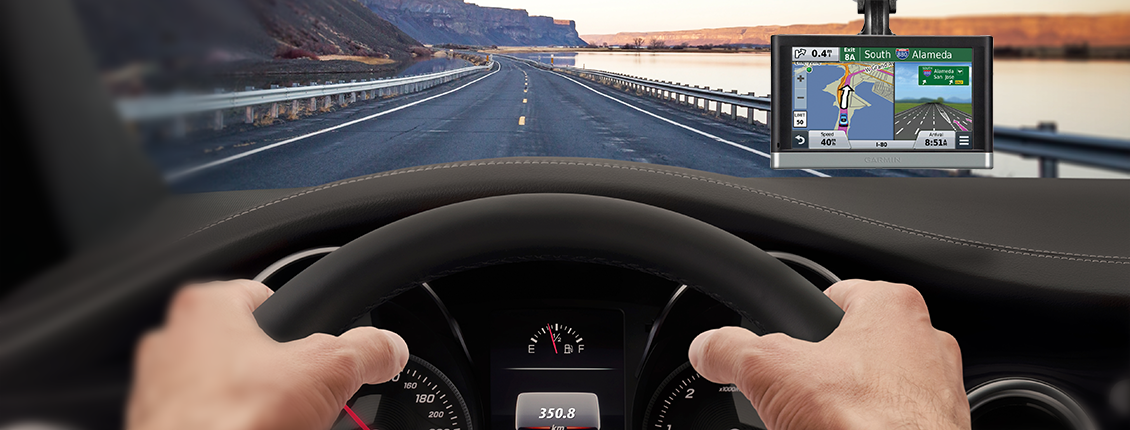
Navigation System—What Is the Best Way to Drive from Point A to Point B?
Updated 8.9.19: While many new cars include a navigation system, smartphones dominate the navigation market. They’ve also taken a huge bite out of compact cameras, music players, camcorders, and portable game players. The smartphone is a multi-tool, which is undeniably handy. But like all multi-tools, it must make compromises for everything to fit. And when it comes to navigation, compromises abound.
It’s up to you to exploit those weaknesses and turn them into GPS sales—because there are still potential customers out there.
Why choose a GPS navigation system over a smartphone? Let’s take a look.
Common Smartphone Arguments:
- Already have the phone so it’s free
- Very portable, usable everywhere
- Responsive HD touchscreen
- Many free GPS app choices; Some more robust apps are available for a small fee and may include offline-use maps
- Free integrated traffic alerts and frequent map updates
- Multitasks. Handy access to web browser for related Internet searches and active phone number links that call by simply tapping
- Sometimes locates position more quickly since a map app uses both satellite and cellular signals
Navigation System Strengths and Counterarguments:
- No data overages or monthly fees. One-time only expenditure even includes mount. Smartphones aren’t truly free, as they have to be purchased, have recurring monthly fees and require a separate vehicle mount. Constant map app usage runs up data charges
- Rugged, dedicated device. It can be easily dismounted and stowed in car. Not likely to get misplaced, lost or damaged. Sharable.
- Big, sunlight-readable screen and loud volume. Most screens are much larger and brighter than smartphones. Fonts and graphics optimized for simplicity and viewing at a distance. Voice directions loud enough to be heard over road noise and traffic sounds.
- Customized, detailed programming with simplified interface for complete user control.
- Uses specialty navigational aids like 3D graphics, spoken turn-by-turn directions using street names or landmarks and multidestination routing.
- Preloaded maps are always available. Free map apps are basic. Premium apps cost extra and offline map access requires a large chunk of smartphone memory.
- Available at many price points. Many offer free map and traffic alert updates (number of updates a year varies). Updates installed manually by user at his/her convenience.
- Navigation mode always full screen. Avoids smartphone multitasking pitfalls like minimizing, closing or pausing navigation app when using phone, doing searches, etc.
- Uses satellite signals. Works where there is no cellular service. Since map apps require both GPS and cellular signals, reliability can be affected in rural and remote areas.
Upping the Navigation System Stakes
GPS manufacturers haven’t thrown in the towel. Many GPS navigation systems now include Bluetooth, a dash cam and even a rearview camera. Garmin, among others, is pioneering driver awareness and safety alert features like lane departure and forward-collision warnings, speed limits, dangerous curves, and more. And solutions to driver frustrations, such as navigating complex areas like airports or malls or finding the closest parking, are being addressed.
Then there are devices like the Magellan SmartGPS. Adopting the “if you can’t beat ’em, join ’em” strategy, it syncs to smartphones or tablets, plus uses smartphone-like apps to automatically receive information of lowest gas prices, reviews and deals from Yelp, traffic updates and more.
And there’s are car GPS units from Rand McNally. OverDryve is billed as a connected car GPS tablet and brings together a number of wide-ranging features. These include smart device syncing and audio streaming with playback through the vehicle’s stereo speakers, voice navigation, dashcam, trip planning, forward-collision warnings and more. It will even read aloud incoming texts by integrating with the smart device’s built-in voice assistant. And it comes with a magnetic smart mount to keep the device in place and powered.
The Takeaway
People are still buying a dedicated navigation system. Manufacturers are continually introducing new features. And the more noise made about the advantages of automotive GPS, the more public opinion will sway.
Stand-alone GPS for cars still makes sense. Arm your sales force with the pros and cons, run ads proclaiming GPS superiority and post in your store the Smartphone vs. GPS chart provided below. There are plenty of strong and compelling reasons why to buy a PGPS—plus millions of households that want to buy one.
